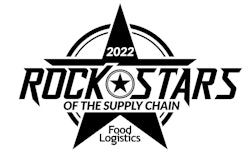
The constant widening of product selection and entry of new products has been feeding inefficiency in the consumer packaged goods (CPG) industry for a long time. The waste within the CPG space comes down to a lack of assortment optimization. This lack of focus has driven more and more retailers to follow a scrambled assortment strategy to remain competitive with other retailers despite dwindling returns and oftentimes consumer apathy to new products.
Why is there so much waste in the CPG environment?
The waste within the CPG space comes down to a lack of assortment optimization. This lack of focus has driven more and more retailers to follow a scrambled assortment strategy to remain competitive with other retailers despite dwindling returns and oftentimes consumer apathy to new products. With retailer and supplier KPIs focused on new product innovation and new product sales, teams are being incentivized to keep adding to their product SKUs irrespective of what the ballooning number of products does to brand perception.
This not only risks a brand's reputation with their shopper, but it also impacts the relationship between partners. With retailers and suppliers both focused on new product or line extension KPIs, it is no surprise that retailers are overwhelmed by constant new product pitches from suppliers. As a result, it can be hard for retailers to discern which new offers are designed around shopper insights and to serve an authentic real consumer want or need.
Suppliers have an obligation to reduce the complexity in the assortment puzzle by reducing the numbers of new products, line extensions and product modifications they pitch. According to the 2020 Advantage Report, this is in fact a point of frustration for many retailers, who ranked “assortment optimization” and “objectivity” low in terms of satisfaction with their supplier community. The constant production of new products, without a clear and genuine rationale, is eroding relationships, profit margins and consumer trust.
How to optimize your assortment strategy
- Focus on building a meaningful relationship between retailer and supplier, whereby both parties are motivated by a genuine desire to address the issues and their underlying causal factors in their assortment strategies.
- Create KPIs on both sides of the supplier and retailer relationship that prioritize win-win solutions, long-term economics, smart ways to cater for range and customization needs and put a magnifier on sustainability.
- Build a mandate of trust, objectivity, transparency and responsibility around portfolio management, promotions and innovation, a mandate that does not shy away from hard choices and short-term pain for long-term gain.
- Operationalize actions, KPIs and the mandate across every department in both the supplier’s and retailer’s organization – you will need everyone working in the same direction to be successful.
- Limit assortment and new product development by relying on data-backed shopper, category and storewide insights, enabling that only products that shoppers want are created, supplied and sold.
- Prioritize flexibility and speed in your processes to effectively manage supply and meet the rapidly shifting priorities of shoppers.
- Design an effective online assortment methodology to increase agility and go where the shoppers are.
For years, assortment strategy has been nudged to the side as a secondary consideration in the pursuit of shoppers with proliferation causing a problem for supply chains, profits and shoppers. Now is the time to focus on assortment optimization – your business, your shoppers and your shareholders will thank you for it.





















